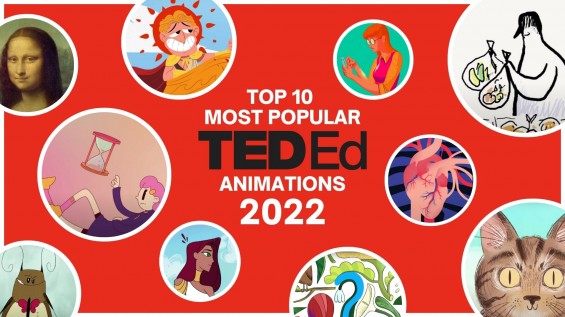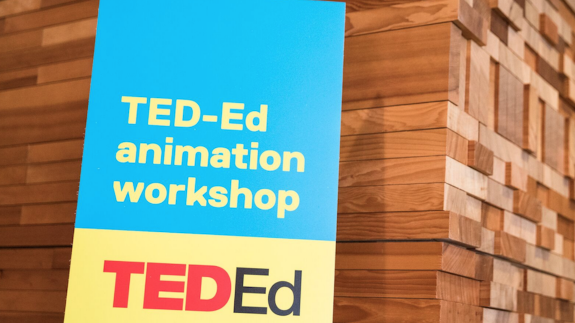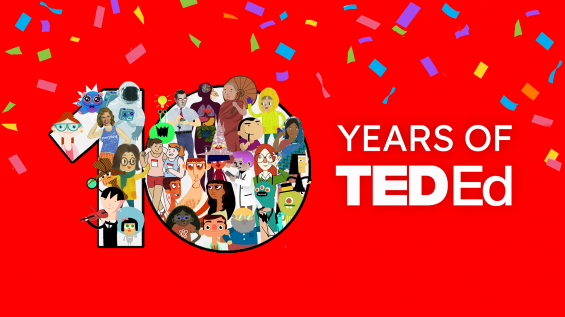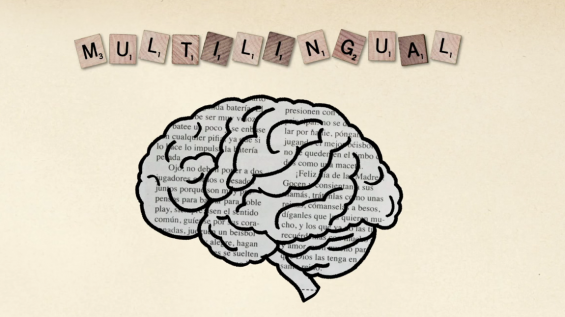
Animation basics: What is rotoscoping?

Rotoscoping is, in essence, a technique that goes back to the early days of cinema, when animators would trace live action footage projected frame-by-frame onto paper, either to use as motion reference or directly copy into their work. Here are two examples:
At TED2017, the TED-Ed animation team taught attendees how to make rotoscoped animation, using the TED Talk intro sequence as our inspiration. Attendees used paint, clay, whiteboards, coffee grinds, map tacks, paper, and yarn to reimagine the TED logo. For software, we used iStopMotion. Here’s the end result:
How we developed this animation workshop: Our challenge was to come up with something that would allow people to experiment and have fun within a short time frame, but still wind up with some sort of coherent end product. Thinking about past examples of this sort of undertaking, the animated MTV logo came to mind. Throughout the 1980s and 90s, a dense roster of animators and filmmakers created 30-second promotional bumpers for the network, using a countless variety of approaches and techniques, all riffing off of and landing on the iconic MTV logo at the end of each visual romp.
Taking inspiration from this era of experimental popular culture, we thought it would be fun to have workshop participants remix the 10-second TED intro title sequence animation, using a variety of materials and frame-by-frame animation techniques on tabletop stop-motion setups. And in order to maximize the time we had with people, many of whom likely had very little prior experience with animation, we decided to have them rotoscope the TED intro. For our purposes, we had the TED intro sequence pre-loaded into the stop-motion software we were using to capture frames. This enabled us to superimpose the sequence over the camera feed on the screen as participants animated, so they could visually refer to it frame-by-frame as they went. We prepared a short reel of examples of work created with the techniques and materials we were about to employ, and then turned our participants loose, encouraging them to experiment and diverge from the reference material if they so desired.
Here are a few of the methods, materials, and references we shared:
- Clay: The Creation (Will Vinton, 1981))
- Whiteboard: Drive: The Surprising Truth About What Motivates Us (Andrew Park, 2010)
- Coffee Grinds (similar to sand): The Owl Who Married A Goose (Caroline Leaf, 1974)
- Object: Game Over (PES, 2008)
- Oil Paint on Glass: Retouches (Georges Schwizgebel, 2008)
Ready to try out some animation techniques at home? Making animation at home does not require a lot of expensive equipment, software, or know-how. Here are our recommendations:
1. Use your phone or your tablet. ($) You’ll need to get a stop-motion animation app, like one of these (Free – $10):
- iStopMotion for iPad (HD capable)
- iMotion for iPhone (HD capable)
- Stop Motion Studio (HD capable)
- Lapse It for Android (Pro is HD capable)
- Stop Motion for Android (HD capable)
For best results, you’ll also need to stabilize your phone or tablet using a phone stand, a tripod attachment, or a DIY phone stand:
- iPhone and Android stands
- Mounts for a multitude of devices, ranging from tripod adapters to table clamps
- DIY origami iPhone stand
2. Use a digital camera attached to animation software. ($$$) Similar to our set-up in the TED2017 workshop, you’ll need to get a stop-motion animation software** like one of these ($40 – $300):
**Be sure to check that your camera is supported by the above software options!**
You will also need a tripod to stabilize your camera. Any tripod will do. Here are two lightweight, very reasonably priced options available on Amazon and elsewhere: Sony VCT-R100 / Magnus PV-3400. Of course, the heavier duty the tripod, the more stable your set-up will be! Check the specs to be sure that the tripod you choose can support the weight of your camera.
3. Use your digital camera to take photographs and edit them together later. Animation is simply a sequence of photos, so it’s not necessary to purchase a tablet or software in order to make animation, if you have access to video editing software. As long as you have a tripod to stabilize your camera, and the patience to edit the photos into a sequence, you can always make animation this way!
To learn more, watch TED-Ed’s series of videos on ed.ted.com called ‘Animation Basics’. Some of these are behind the scenes on our animated lessons, and others are meant for first time animators. All of them are filled with animation #protips! We especially recommend: TED-Ed animators explain timing and spacing, and TED-Ed animators explain how to make pixilation animation, or ‘homemade special effects’. Happy animating!



